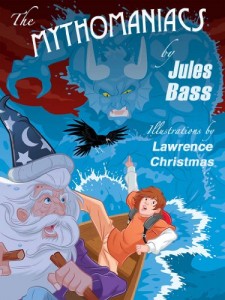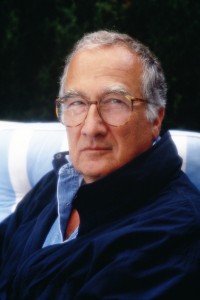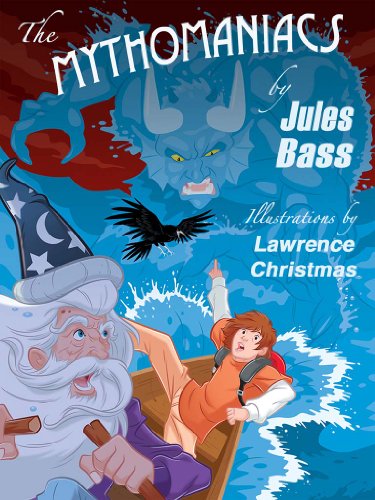The Children’s Book Review | March 10, 2014
 A fairy tale is a story of marvels and magic set in an unreal world in which the events that take place are beyond the realm of possibility.
A fairy tale is a story of marvels and magic set in an unreal world in which the events that take place are beyond the realm of possibility.
Science, logic and fact are changed to suit the story. On the other hand there are exceptions to that statement when worlds creatively collide … as they do in The Mythomaniacs. Here we have a real-life setting, characters and story—and folded into that story are a series of quests that take our characters, who live in a small town in England, into worlds of fantasy that do not exist in the real world.
The fairy tales, therefore, are flights of the imagination of the writer who blends his real and imagined characters into an almost believable whole—just as dreams and nightmares seem real so do the adventures in The Mythomaniacs ask the reader to believe the events are many times within the realm of possibility … inventions of the mind. For example, Kenneth Graham and J.R.R.Tolkien invent characters and situations not far removed from the worlds we know … thereby making the borders between the interests of children and adults become indistinct.
Who draws the line that says reality stops here —everything beyond is mere illusion? The reader draws that line—aided by the writer.
We are all—young and old—drawn to fantasy. Great stories born out of the writer’s imagination satisfy young minds and their hunger for adventure and their basic love of humor and nonsense.
Fantasy offers me, as the writer, the ultimate freedom to invent worlds of my own making. No other field in literature affords so great an opportunity for an author to express his personal vision of life, as it might be. All play at his command.
In Harry Potter it is as if the writer had the ability to transmute actuality into another dimension. The Hobbit, as another example, must have had its genesis as a spirited variation on old Norse and Saxon themes – of dragon-haunted regions, dwarfs, ill-gotten treasure and the righting of old wrongs. And what is Alice In Wonderland but a complex dream world with a logic all of its own.
Dr. Doolittle and Mary Poppins are, like The Mythomaniacs, episodic in nature – moving in ordered sequence to their climaxes and resolutions. It is the uniqueness of the invented characters and their highly original behavior and appearances that make them memorable e.g., the Seven Dwarfs in Snow White.
Hans Christian Andersen’s fantasies were compounded of his own originality and vision while, at the same time, rooted in the old folk tales of Denmark – just as many of the fantasies in The Mythomaniacs are rooted in old folk tales. Indeed there are many books that strive to tell us that Merlin and His Knights and the magical Sword actually existed. Fairy Tales have their own inner logic and an innate regard for wonder and the supernatural – and so their appeal is universal.
Let us, for a moment, explore one story by Hans Christian Andersen:
The Real Princess. Here are his opening words:
“There was once a Prince, and he wanted a princess, but then she must be a real princess. He traveled round the world to find one, but there was always something wrong. There were plenty of Princesses, but whether they were real princesses he had great difficulty in discovering.
One evening…”
Are you not drawn in? Do you not wonder how the story will play out?
The entire piece is but a mere ten paragraphs long (you know it as The Princess And The Pea), and could not this fairy tale as well be the basis for a true story? Andersen thought so—and the last six words of his short story are: “Now this is a true story.”
Probably the best writing that gives animals human characteristics is Kenneth Graham’s The Wind In The Willows. One chapter in particular where Ratty, Mole and Badger decide to do a psychological intervention to get Mr. Toad to change his wild destructive and unpredictable ways.
Here is a short paragraph from the original text as Badger says to Mole and Ratty:
“We must be up and doing, ere it’s too late. You two shall accompany me instantly to Toad Hall, and the work of rescue shall begin.”
“Right you are,” cried the Rat. We’ll rescue the poor unhappy animal. We’ll convert him!”
A better example of anthropomorphism cannot be found.
The Mythomaniacs is influenced by several writers of adult literature e.g. Mark Twain’s Connecticut Yankee In King Arthur’s Court—a fine example of time travel as has ever been written. Children and adults alike revere Huckleberry Finn—but the younger ages prefer Tom Sawyer because they find it both easier to read and to relate to. Indeed it is questionable if Huckleberry Finn could be published today, as written.
The Mythomaniacs borrows freely in adapting concepts from Edward Lear’s The Owl and the Pussycat and his nonsense poem Jabberwocky—and does the same with Alfred Lord Tennyson’s wonderful saga from Arthurian times, The Idylls Of The King, in which Merlin and his wicked paramour, Vivien, are created as if they truly existed.
At the start of the quest in The Mythomaniacs the Demon Mythras tries to get our young hero, Gilbert, to turn back and not enter his world of mythology—for it is Mythras who guards the line between reality and illusion i.e., fantasy. When Paul asks Gilbert “who draws that line? Gilbert replies: “My dad says everyman draws it for himself”
And Gilbert reminds Paul that it is easy for him to cross the line because he is an artist and his drawings are a window into the world of fairy tales.
“When I’m illustrating my dad’s stories it’s like I’m living in all the places I’m creating with pen and ink.”
And then The Mythomaniacs borrows Poe’s famous Raven—who speaks but one word: “Evermore” as he leads our questing travelers through the curtain of mist that will take them to the other side of the line.
Hopefully, in The Mythomaniacs, there is much that could bear classroom discussion on the subject of myth and fairy tales and how many sequences in the book relate to today’s world.
Fables were first written in 1484 (Aesop’s Fables). History tells us that they were written for adults but children loved them when they were first read aloud by their parents and teachers…and soon illustrated editions were printed specifically for children in the mid 17th century – and in the 19th century even more editions appeared but they did not contain enough illustrations to be considered “picture books.”
Undoubtedly many adult books were appropriated by children e.g. Gulliver’s Travels & Robinson Crusoe. The 19th century gave us Randolph Caldecott (an award named in his honor that exists to this day) and Kate Greenaway who elevated the picture books with her inimitable style (and who also has a prestigious award named for her which exists today).
Did Charles Dickens write A Christmas Carol for children? I think not. But (that was 1843) children found that it spoke to them in a unique manner, as did The Jungle Book wherein children were fascinated by the story of a boy raised by wolves.
I can only hope that The Mythomaniacs will be read by and to children, and young adults and parents will find there is much to attract and hold their interest and amusement.
About the Author

Jules Bass has produced several animated films, including The Hobbit, The Last Unicorn, Rudolph the Red-Nosed Reindeer, Frosty the Snowman, as well as several hit animated television shows such as ThunderCats. Jules has written two children’s books for Barefoot Books: Herb, The Vegetarian Dragon and Cooking With Herb. They have been translated into seven languages and reprinted in paperback. Herb received a “Pick Of The Lists” from American Bookseller, Lifeworks Magazine’s the “Real Life Award,” IRA-CBC “Children’s Choices Award”, “top-of-the-children’s list” at American Book Sellers Association. The London Times called Herb one of the best books of the season. It was short-listed for the Kate Greenaway Award and praised by Paul McCartney as: “A magical read for all new thinkers, young and old…” Herb made his television debut on The Food Network.
Bass’ new novel for middle-grade readers from Eltanin Publishing, The Mythomaniacs, takes place in Devon, in the south-west of England, and from there transports the reader into many worlds of fantasy including a quest that leads back to Arthurian times.
For more information on Jules Bass, visit: themythomaniacs.weebly.com
Add this book to your collection: The Mythomaniacs


1 Comment
Thanks for sharing this blog; it provided me with a lot of knowledge